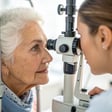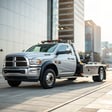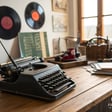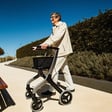Sleep apnea affects millions of Americans, disrupting sleep and potentially causing serious health complications. The landscape of treatment options is evolving rapidly.
Sleep Apnea Innovation: Understanding the Condition
Sleep apnea is a serious sleep disorder where breathing repeatedly stops and starts during sleep. The most common form is obstructive sleep apnea (OSA), where throat muscles relax and block the airway. Central sleep apnea occurs when the brain doesn't send proper signals to the muscles that control breathing.
Diagnosis typically involves polysomnography (a sleep study) or home sleep apnea testing. During these tests, your breathing patterns, oxygen levels, and other vital signs are monitored while you sleep. According to the National Center for Biotechnology Information, proper diagnosis is essential for effective treatment planning.
The condition affects people of all ages but becomes more common in older adults. Left untreated, sleep apnea can contribute to high blood pressure, heart problems, type 2 diabetes, and daytime fatigue.
Best CPAP Alternative 2025: Beyond Traditional Treatments
For years, Continuous Positive Airway Pressure (CPAP) therapy has been the gold standard for treating sleep apnea. A CPAP machine delivers constant air pressure through a mask to keep your airway open while you sleep.
However, many patients struggle with CPAP compliance. The masks can be uncomfortable, the machines noisy, and some people feel claustrophobic. This has driven innovation toward more comfortable alternatives.
One promising development is the AirSnore system, launching in 2025. This over-the-counter solution combines a specially designed mouthpiece with natural drops to help users breathe more easily at night. Unlike traditional CPAP machines, this approach doesn't require electricity or create noise that might disturb sleep partners.
Top Sleep Devices: Emerging Technologies
The sleep technology market is exploding with innovations aimed at treating sleep apnea more effectively and comfortably. Here are some notable advancements expected in 2025:
- Implantable Nerve Stimulators: These devices stimulate the hypoglossal nerve, which controls tongue movement, to prevent airway obstruction. The newest generation offers more precise stimulation with fewer side effects.
- Smart CPAP Devices: Traditional CPAPs are getting smarter with auto-adjusting pressure, heated humidification, and companion apps that track sleep quality and compliance.
- Positional Therapy Devices: Since sleep apnea often worsens when sleeping on your back, these wearable devices gently vibrate to encourage side sleeping without waking you.
- Oral Pressure Therapy: These newer devices create a vacuum in the mouth that pulls the soft palate forward, opening the airway without the need for a mask.

New Sleep Apnea Device 2025: The Breakthrough
The most anticipated development for 2025 is the launch of the NightBreath system, a revolutionary approach to sleep apnea treatment. This device combines several technologies:
- Micro-CPAP technology that eliminates the need for hoses and large machines
- Adaptive pressure that responds to your breathing patterns in real-time
- Integrated sleep tracking with AI analysis
- Smartphone connectivity for monitoring and adjustments
Early clinical trials show promising results, with a 92% compliance rate compared to approximately 60% with traditional CPAP therapy. The device is also significantly quieter, operating at just 26 decibels—about the sound level of a whisper.
"We're seeing patients who've abandoned CPAP therapy returning to treatment with this device," notes Dr. Sarah Johnson, sleep specialist at Stanford Sleep Medicine Center. "The comfort factor cannot be overstated."
Sleep Solutions for Seniors: Special Considerations
As we age, sleep apnea becomes more common and potentially more dangerous when combined with other health conditions. Seniors have unique needs when it comes to sleep apnea treatment:
Comfort and Ease of Use
Many seniors find traditional CPAP masks uncomfortable or difficult to put on, especially those with arthritis. Newer devices feature magnetic connectors and simplified designs specifically addressing these challenges.
Portability for Active Lifestyles
For seniors who travel or split time between homes, portable treatment options are essential. The latest devices weigh less than a pound and can operate on battery power for several nights.
Integration with Other Medical Devices
Many older adults use multiple medical devices. The newest sleep apnea innovations can safely integrate with oxygen concentrators, cardiac monitoring equipment, and other necessary devices.
What's the most effective sleep apnea treatment for people who can't tolerate CPAP?
This is perhaps the most common question sleep specialists hear. The answer depends on several factors, including the severity of your sleep apnea, your overall health, and your personal preferences.
For mild to moderate sleep apnea, oral appliances that reposition the jaw and tongue can be effective. These custom-fitted devices, similar to mouthguards, help keep your airway open during sleep. The newest generation of these devices allows for precise adjustments without returning to your dentist.
For more severe cases where CPAP isn't tolerated, surgical options might be considered. These range from tissue removal to implantable devices. The Inspire hypoglossal nerve stimulator, for example, is implanted during an outpatient procedure and controlled with a small handheld remote.
Weight loss can also significantly improve sleep apnea symptoms for many people. Even a 10% reduction in body weight can reduce the severity of sleep apnea by 30% or more.
The Financial Side of Sleep Apnea Treatment
The cost of sleep apnea treatment varies widely depending on the approach. Traditional CPAP machines typically cost between $500 and $1,000, with masks adding another $100-$300. Most insurance plans, including Medicare, cover these devices when medically necessary.
The newer alternatives generally come with higher price tags. The NightBreath system is expected to retail for approximately $1,200, while implantable devices like Inspire can cost over $20,000 for the device and procedure combined.
However, the financial calculation should include the cost of untreated sleep apnea—increased medical expenses from complications, lost productivity, and even increased risk of automobile accidents due to daytime sleepiness.
Disclaimer: This content is for informational purposes only and not intended as medical or financial advice. Consult with healthcare providers about appropriate treatment options for your specific situation. Insurance coverage varies by plan and provider.
Looking Ahead
The sleep apnea treatment landscape continues to evolve rapidly. By 2025, patients will have more options than ever before, with solutions tailored to different needs, preferences, and lifestyles.
If you suspect you have sleep apnea or are struggling with your current treatment, talk to a sleep specialist about these emerging options. With the right approach, better sleep—and better health—are within reach.
Tags

About Elliot J. Branson the Author
Elliot J. Branson is a seasoned financial analyst with over two decades of experience guiding individuals through their investment journeys. His expertise lies in creating personalized strategies to help investors navigate volatile markets and achieve long-term financial success.
Recommended Articles
How to Detect Macular Degeneration Early
Learn to detect macular degeneration early through eye exams and understanding symptoms, ensuring proactive eye health management.
Rent-to-Own Tow Trucks: What to Know in 2026
Explore rent-to-own tow trucks in 2026, offering flexibility for operators to gradually gain ownership while managing costs effectively.
How to Spot a Valuable Toy Before Selling It at a Garage Sale
Learn how to identify valuable toys to sell at garage sales, maximizing profit while decluttering your home. Find out what buyers are looking for!
5 Old Household Items That Are Suddenly Worth Money
Discover five old household items that could be worth a lot of money today, from vintage typewriters to collectible toys and more.
The Smart Rollator That’s Redefining Independence for Seniors
Smart rollators are revolutionizing senior mobility by integrating advanced technology, such as intelligent braking systems, GPS for location tracking, and health monitoring features, which improve safety and reduce healthcare costs through fall prevention. These devices, despite their higher upfront cost, offer long-term financial benefits by delaying the need for costly home care, and some insurance plans may cover the associated expenses.




